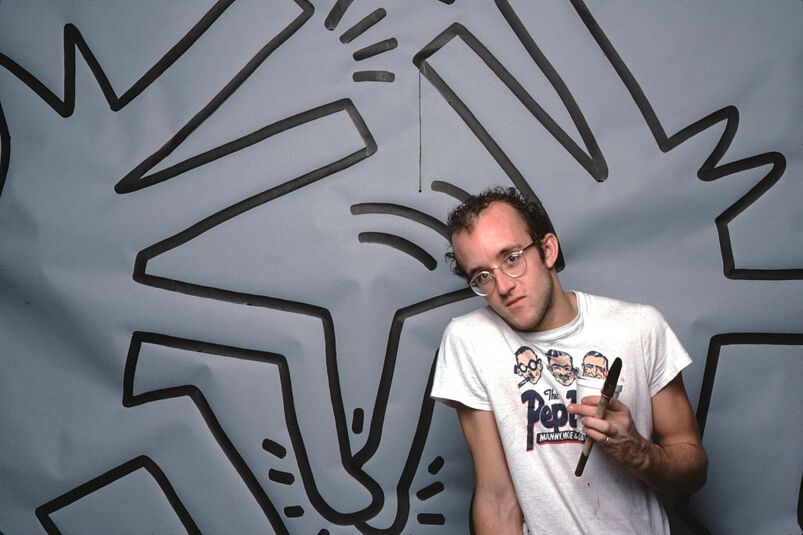
Keith Haring was a gay artist and activist who became a household name – and gay icon – in American culture.
Haring was a modern Hollywood agent’s wet dream, the celebrity trifecta: he could’ve been famous for his talent alone, but he was philanthropic and a beloved real-world personality.
But most of all, his existence echoed individuality as the ticket to stardom. So let’s rekindle with the groundbreaking highlights of his gay existence.
Keith’s Early Life and Background

Keith Haring was born in Kutztown, Pennsylvania, on May 4th, 1958. He began to step into his artistic legacy as a child learning how to draw cartoons from his father. The rebelliousness of his youth propelled him to modern art.
Guilted by his parents, Haring studied commercial art at the Ivy School of Professional Art in Pittsburgh from 1976 to 1978 and dropped out when the career tracks failed to interest him.
There are different claims about what pushed the artist to pursue fine art, including reading The Art Spirit (1923) by Robert Henri and seeing an exhibit by Pierre Alechinksy (which sounds more like like a rumor started by a 20th-century publicist).
We like to think the guy’s reasoning was multifaceted, in true gay fashion.
His Unique Artistic Style
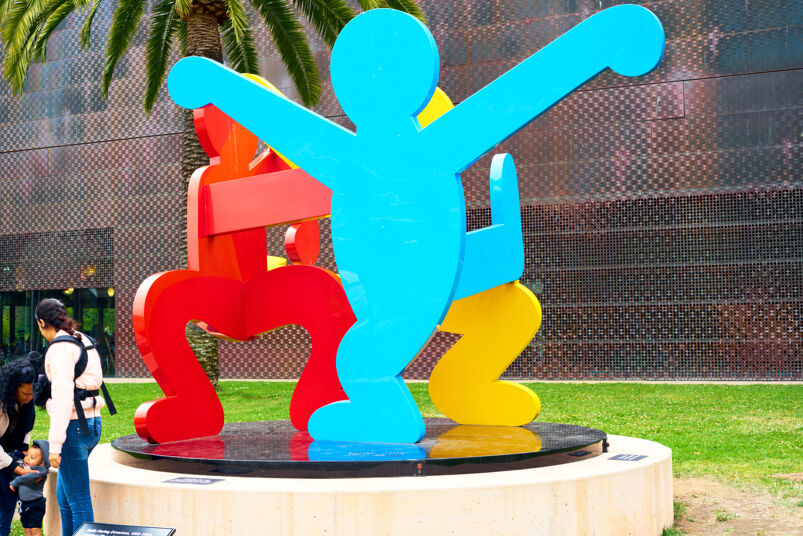
You probably won’t find many people in this lifetime who haven’t heard Keith Haring’s name, and even fewer who wouldn’t recognize his work.
Haring’s signature style appears with continuous repetition of stylized shapes in bright, vibrant colors and outlined in black on different media.
The art legend cared deeply about accessibility, so his creations often appeared as subway drawings, white chalk on sidewalks, and graffiti on public buildings. It brought the art world to the streets of Manhattan and street art to the eyes of the masses.
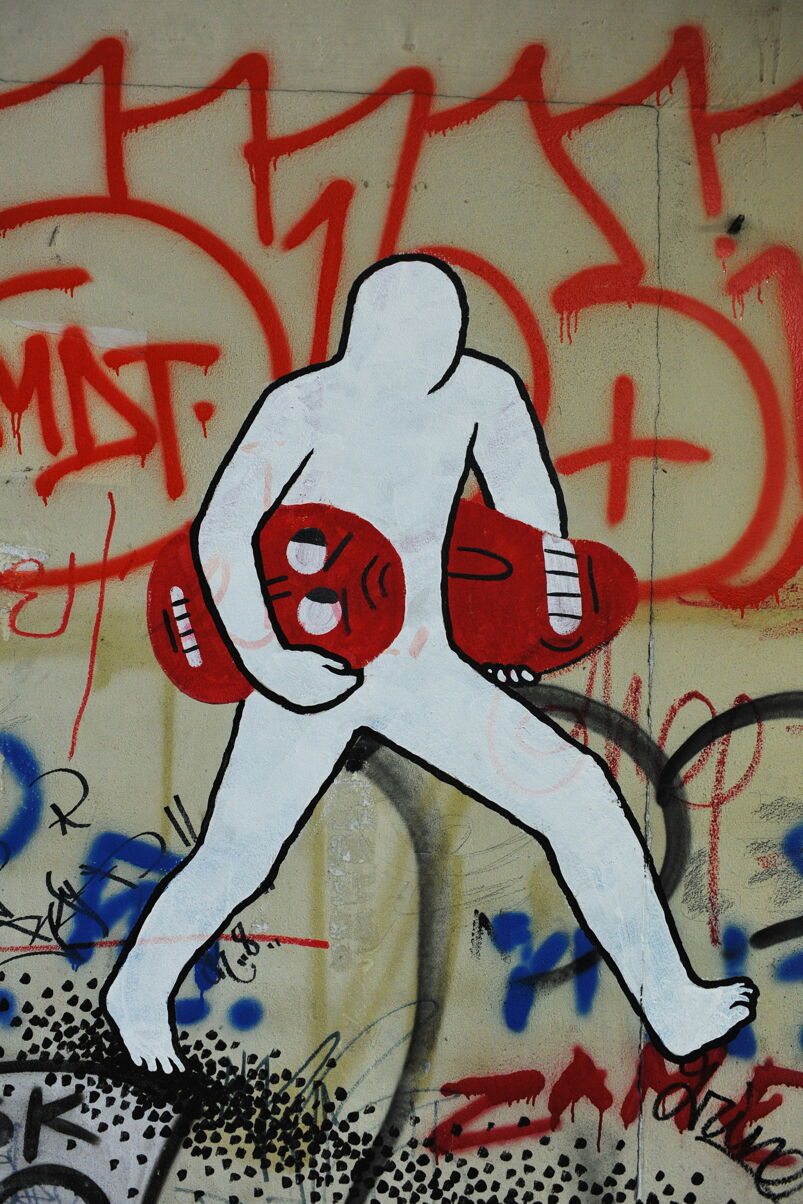
He opened the Pop Shop on Lafayette Street in Soho in 1986, where his work became accessible to everyone. That same year, he drew on the Berlin Wall in October as “an attempt to psychologically destroy the wall by painting it.”
His subject matter channeled causes dear to him, including exploitation, subjugation, drug abuse, and the threat of nuclear holocaust. One of his most famous pieces was “Crack is Wack,” also produced in 1986.

A friend and choreographer, Bill T. Jones, once told the Guardian, “[Haring] could very quickly fill a wall in one go, never use sketches, and never have to go back over the work.”
In the same profile, art dealer Tony Shafrazi said people didn’t know how to label his intricate masterpieces appearing all over New York City. “[The public] didn’t know how to describe it, so they called it graffiti, but it wasn’t. Different images, different identities, different narratives, different symbolism applied to narrative… it was much more complex.”
Today, Keith Haring’s pieces sell for seven figures, and there is a community outcry when any of his public murals face the danger of being torn down.
Haring’s AIDS Activism
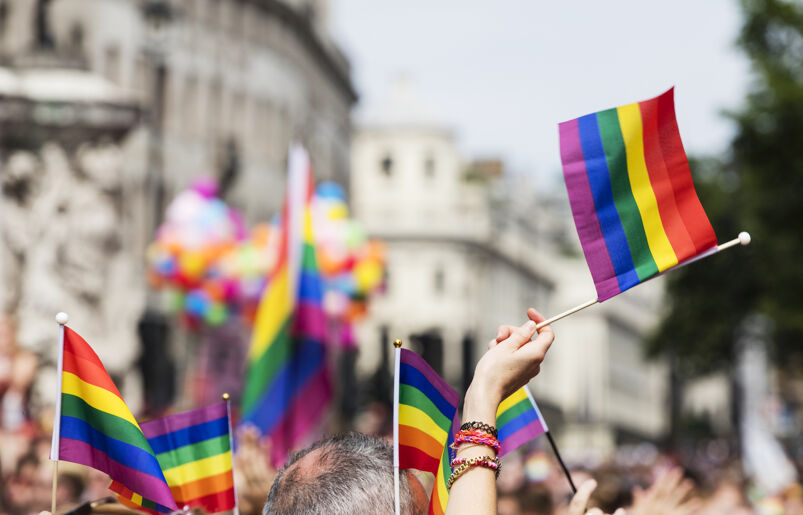
Keith Haring was a visionary of the future, but unfortunately, his body was not immune to the AIDS epidemic wiping out the gay community at the time. He was diagnosed with AIDS in 1988 and, in 1989, established the Keith Haring Foundation, ensuring his activism continued beyond his last breath.
Before the 31-year-old artist died on February 16, 1990, of AIDS-related complications, he produced over 100 solo and group exhibitions.
His final work reflected his battle with the virus and gave visibility to thousands of others somewhere facing his fate.
Even as Haring’s health succumbed, he created badass work and made a gay man dying from the illness a topic of public concern. He reconfigured his woes into stylized motifs of suffering and perseverance.
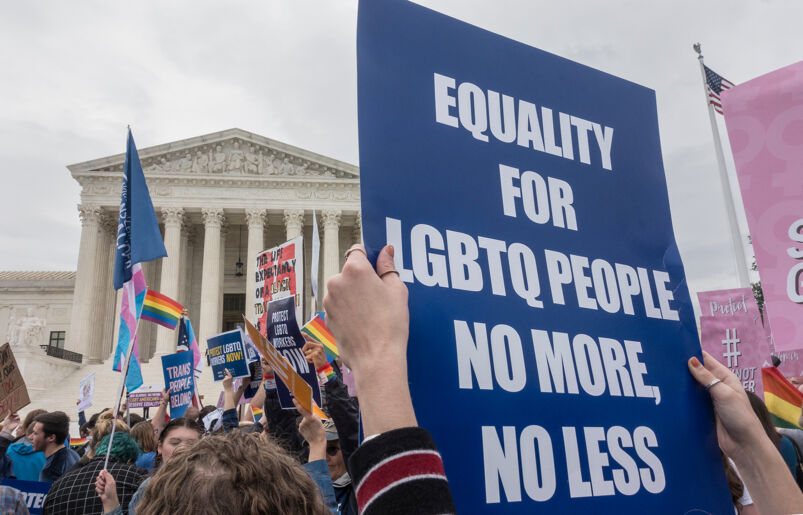
Here are some ways his conviction lived on:
- Queer Resilience: Haring advocated HIV awareness and education and put his art where his heart was, producing works like “Stop AIDS” and “Ignorance Fear.”
- Aids Garden Chicago: In 2018, the Keith Haring Foundation gifted ‘Self-Portrait,’ a 30-foot tall sculpture by the late artist, to the 2.5-acre nonprofit garden, which exists to memorialize the HIV epidemic.
- Timeless Accessibility: The artist wanted to guarantee his art’s accessibility permeated time, and many of his works can be found worldwide as murals and installations open to the public worldwide, including a men’s bathroom in NYC.
- Lives Touched: Haring’s social circle and collaborators comprised some of the greatest queer artists and celebrities of the time – or ever, including Madonna, Tseng Kwong Chi, Jean Michel Basquiat, and Kenny Scharf.
- Giving Back: The Keith Haring Foundation has raised millions in funds to raise awareness and help end HIV.
- Collaborations: Outside of monetary donations, the Keith Haring Foundation also partners with clothing lines and home decor brands including H&M, Ruggable, Primark, Blik, and more. These partnerships provide an additional revenue stream that supports the foundation’s charitable efforts.
Queer Representation in Art
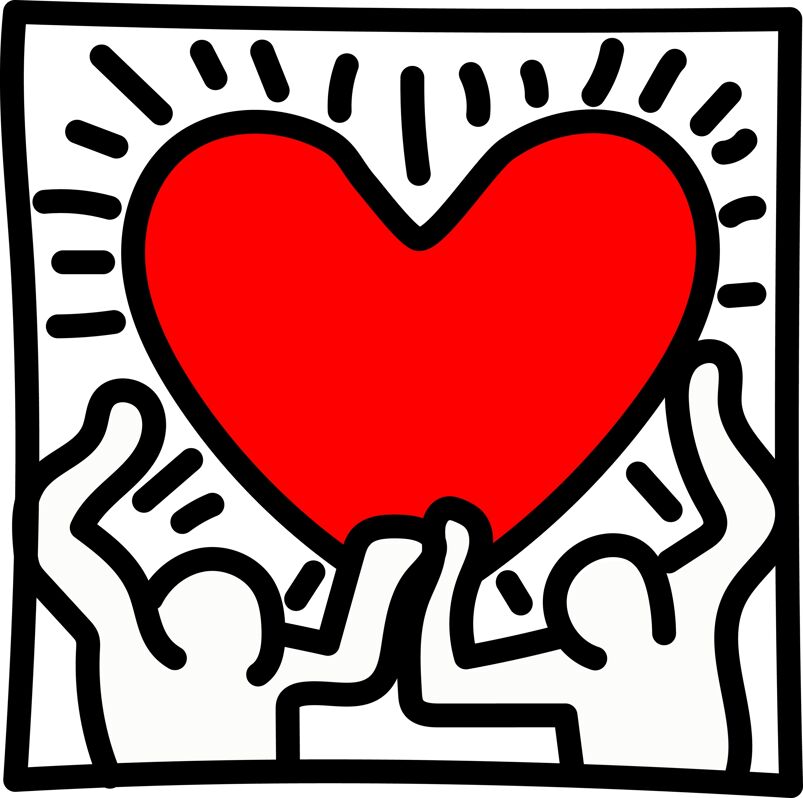
Keith Haring refused to let mainstream success make his work a product of the time. He boldly pursued social justice with his genius. Most of all, he’s a figure for queer excellence without ever compromising authenticity.
It’s hard to believe he died at 31 and still managed to leave behind a life that queer creatives born today learn from and honor, and that many living icons still remember.
May 16, 1984 – Dressed by her friend, Madonna attends Keith Haring’s Birthday party at The Paradise Garage in New York, also performing ‘Dress You Up’ during the bash.#keithharing #dressyouup #madonnastory pic.twitter.com/TXCHTpCwyO
— Madonna (@Madonna) May 16, 2021
Today would have been my dear friend, #KeithHaring ’s 60th Birthday. This is the wrapping paper from a gift he gave me for my 21st birthday — so thankful now that my mom saved everything! pic.twitter.com/suwOdgF0jU
— Brooke Shields (@BrookeShields) May 4, 2018
So this is the original Keith Haring necklace piece Madonna gave me 👱👱 http://t.co/3wDuAaku8A
— diplo (@diplo) May 11, 2014
The art world is abuzz as 120 Keith Haring pieces will soon come to L.A. — of course, those at ArtCenter can view his work every day. @latimes https://t.co/unbVY4N2YX pic.twitter.com/Lcpib1tOSI
— ArtCenter College of Design (@artcenteredu) November 2, 2022
Haring’s legacy is undoubtedly a testament to his fearless self-expression, activism, and groundbreaking artistry. His vibrant, thought-provoking works not only captured the essence of a generation but also played a significant role in raising awareness about the LGBTQ+ community and the AIDS epidemic.
Keith Haring’s enduring influence serves as an inspiration for future generations to break barriers and create positive change through artistic expression and activism.
Learn more about your favorite LGBTQ+ icons, past an present, by subscribing to the Queerty Newsletter.



















Fahd
Nice write-up; I’d also mention that there are a few good documentaries about Haring on the streaming services, and I think one of PBS’ American Masters programs was devoted to him. All very engaging.
Invader7
Keith Haring was truly one of a kind. A shining star that faded away way too soon. His art work was so fun & light ,yet had a deep ,resounding message. He inspired many people.. probably more than he realized. May he RIP !!
azzolina
I don’t think he was religious or spiritual in an ordinary sense, but I think he was a kind of a saint.
Rikki Roze
I remember visiting a gay center in Manhattan in the 80’s and finding the men’s room completely covered in his wonderful drawings of men connected. Is this the men’s bathroom mentioned in the article? Does anyone know if it still exists?
dwgandy
I read an article about it a couple of years ago and it still existed at that time, but it is no longer a men’s restroom. If I remember the article said it was at The Gay Men’s Health Crisis Center. I do not remember what the space was converted to, but I remember it was no longer a restroom.
Kangol2
It was and is at The Center: the LGBTQ Community Center on West 13th Street in the West Village, Manhattan. Haring created the painting, “Once Upon a Time,” in 1989, and it was one of his last public commissions before he died in 1990.
I have photos with friends from when it was the 2nd floor restroom (in the early 90s) and today, when it’s totally restored. (It was actually restored in 2015). If you visit the Center you can see it for free (and visit the gay bookstore, BGSQD, there too–they’re very friendly and appreciate the business!)
Last point. A few years ago, the Keith Haring Foundation did a beautiful thing by raising/donating $3.7 million to the Center, and there’s now a Keith Haring Wing there, that offers lots of vital social services for LGBTQ people. Even in death Haring continues to do good things to benefit LGBTQ people.